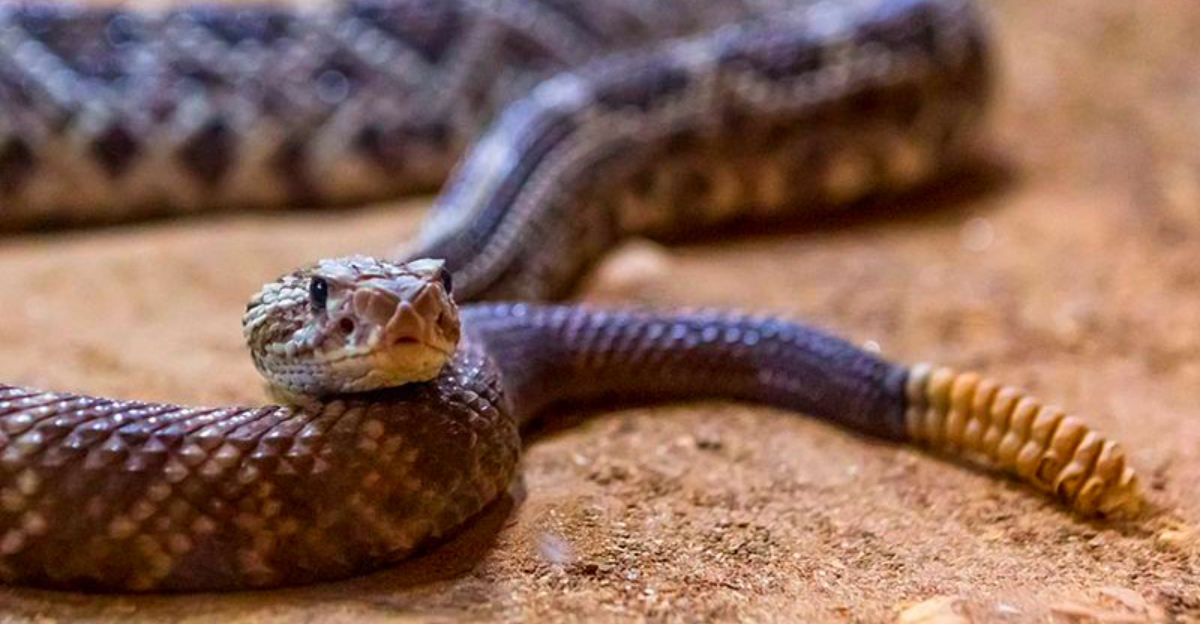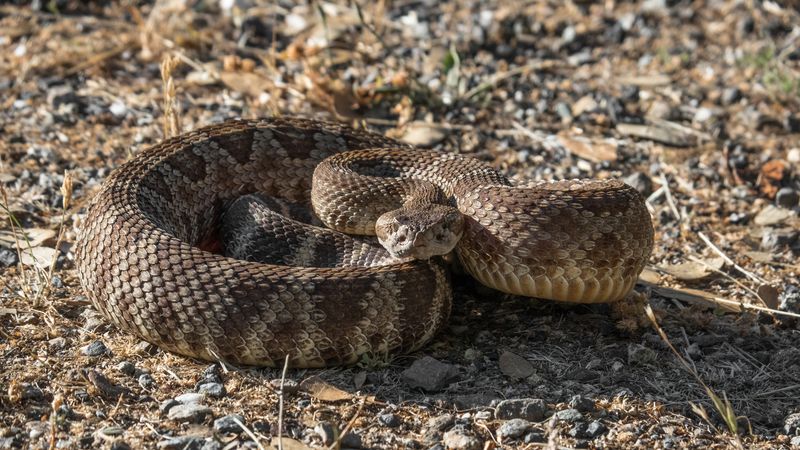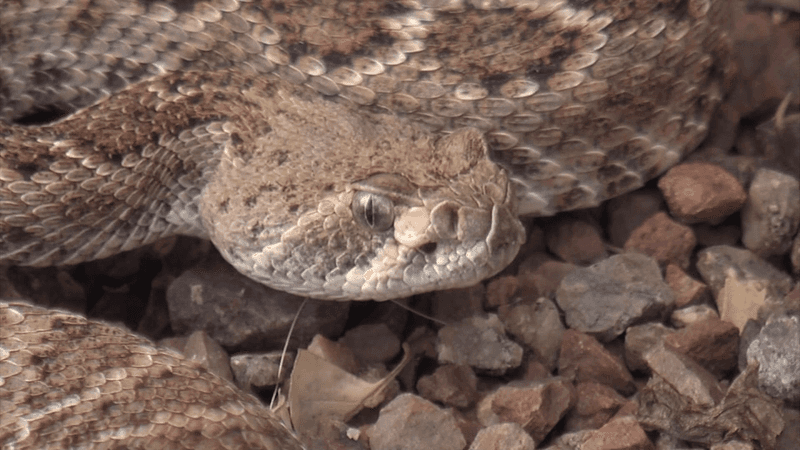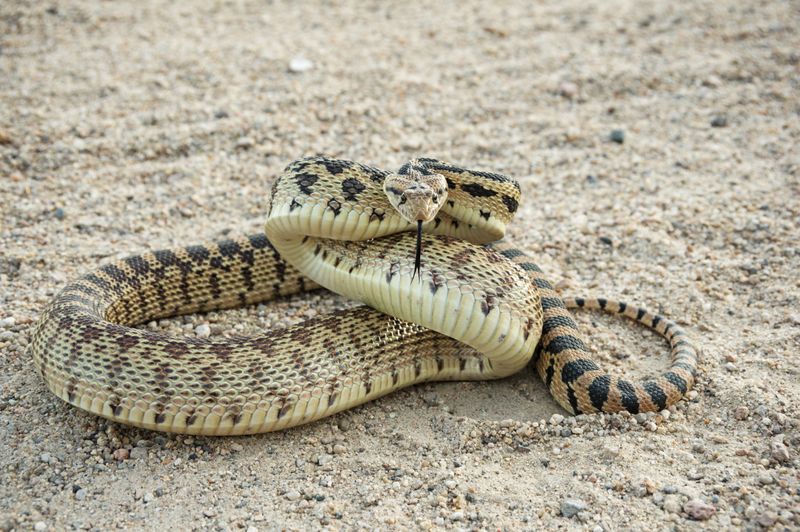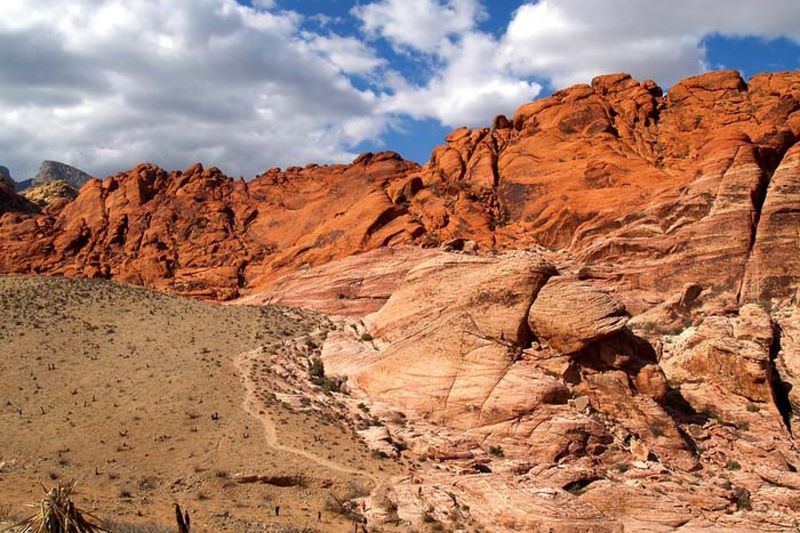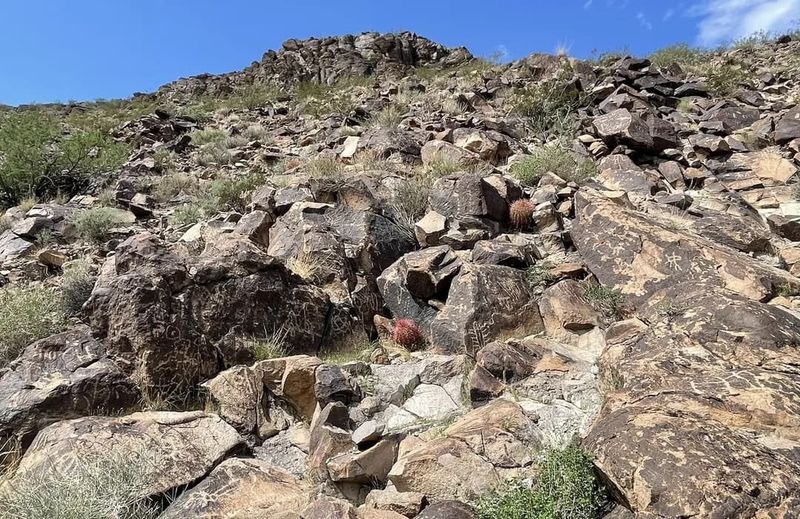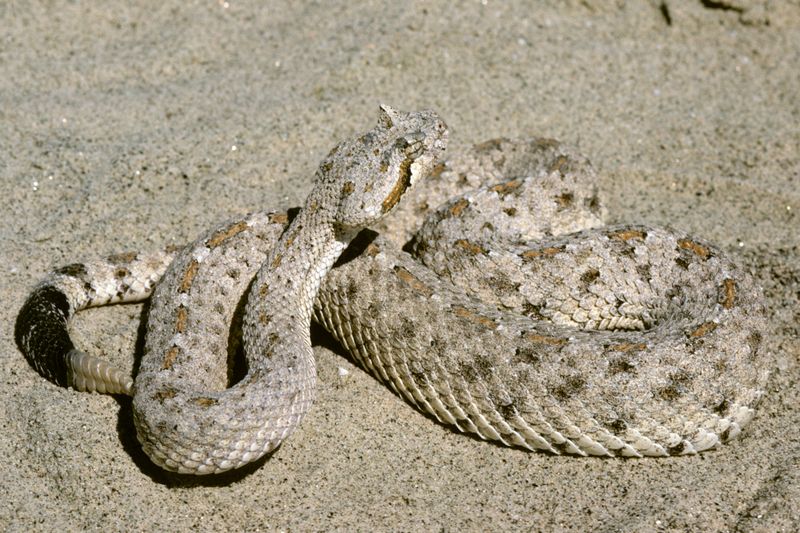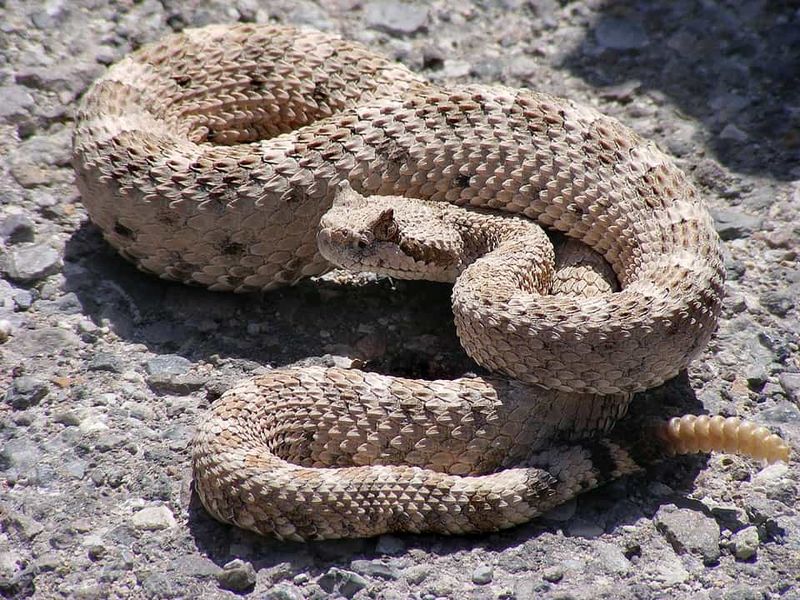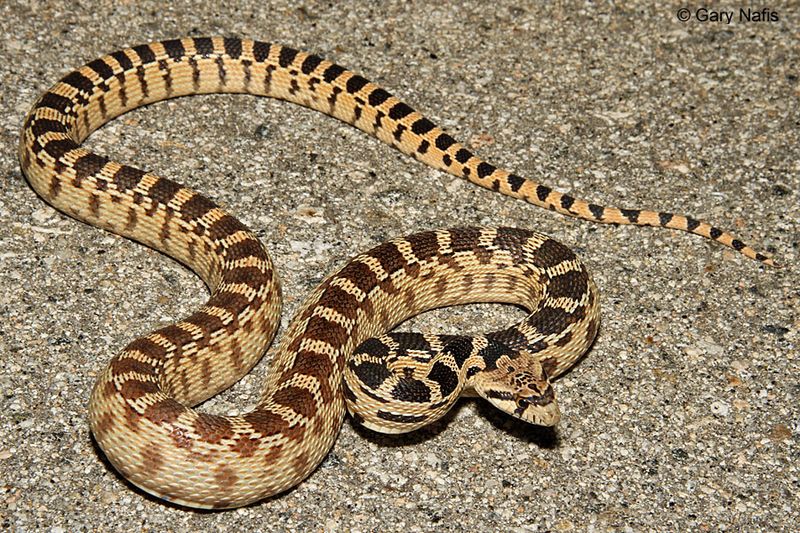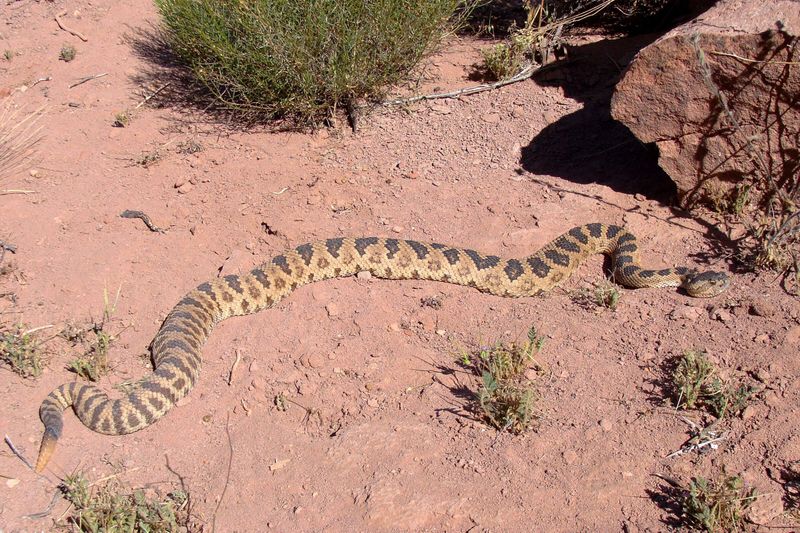Nevada’s deserts and mountains hide more than breathtaking vistas – they shelter rattlesnakes with potent venom and remarkable camouflage. While serious encounters are rare, certain hotspots consistently produce close calls that even seasoned rangers approach with caution. This guide reveals where risk concentrates, why these areas attract snakes, and how to move smartly through them. Read on to upgrade your safety instincts without surrendering your sense of adventure.
1. Lake Mead Mojave Ridges (Mojave Rattlesnake)
The sun-baked ridgelines around Lake Mead provide prime Mojave rattlesnake habitat, blending rocky shelves with scrubby flats where rodents thrive. These snakes favor twilight ambushes along game trails and warm road edges, making shoreline approaches risky. Spring and early fall see a spike in movement as temperatures moderate. Hikers often overlook cryptic patterns that mimic the speckled terrain. Stick to open, established paths and avoid stepping over logs or boulders you cannot see behind. If you hear a rattle, freeze, locate the source, and back away slowly. Mojaves can be defensive and should be given several yards of space.
2. Eldorado Valley Washes (Mojave Rattlesnake)
Eldorado Valley’s braided washes create ideal highways for Mojave rattlesnakes traveling between burrows and hunting grounds. After windy afternoons, fresh sand conceals resting snakes under thin crusts near mesquite roots. Nighttime brings rodent activity and snakes onto warmer surfaces, including two-tracks. Keep headlamps angled low to spot movement and avoid stepping onto cryptic coils. Avoid placing hands on ledges when scrambling. If you must traverse washes, move deliberately and watch for side burrows. Rangers report that sudden temperature spikes can push snakes into shade clusters where hikers also pause. Give brushy wash edges extra space during warm evenings.
3. Laughlin–Searchlight Corridors (Western Diamondback)
South of Las Vegas, the Laughlin–Searchlight stretch holds robust Western Diamondback populations, particularly around basalt-studded hills and roadside embankments. Warm asphalt and riprap invite snakes at dusk, increasing chance encounters on pullouts and trailheads. Diamondbacks can deliver substantial venom and may hold ground if cornered. Keep dogs leashed and away from culverts, rock piles, and metal debris. Scan before sitting on boulders to admire river views. During spring, rodent blooms draw snakes closer to human travel corridors. If you encounter one near your vehicle, wait it out or gently tap the ground from a safe distance to encourage retreat.
4. Lake Mohave Shorelines (Western Diamondback)
Lake Mohave’s mixed pebble and driftwood shorelines attract Western Diamondbacks seeking warmth and prey. Anglers rummaging through drift piles risk startling hidden snakes, especially during mild mornings. Avoid reaching under logs, tackle boxes left overnight, or boat ramps fringed with brush. Keep camp areas tidy to minimize rodent attractants. Watch for coiled snakes under picnic benches and shaded boulders. Footwear matters: sturdy boots deflect many accidental nips. If a snake blocks a path, give it time to move rather than attempting to prod it. Most incidents stem from surprise or harassment; calm, slow backing away prevents escalation.
5. Great Basin NP Foothills (Great Basin Rattlesnake)
In Great Basin National Park’s lower elevations, the Great Basin rattlesnake frequents sunlit sage flats and granite edges. These snakes are less toxic than Mojaves but still dangerous, and their camouflage defeats quick glances. Midday they bask near rock seams; evenings they cruise rodent paths under sage. Keep children close on narrow trails and step on, not over, fallen logs to maintain visibility. Use trekking poles to probe brush when off-trail photography tempts you. Cooler days can lull hikers into complacency, but snakes still shelter under sun-warmed stones. Respect closures and signage; they often mark recurring den sites.
6. Ruby Mountains Talus Fans (Great Basin Rattlesnake)
Talus fans along the Ruby Mountains host abundant rodent burrows and sun traps where Great Basin rattlesnakes ambush prey. Loose rocks create perfect cover, so handholds can be risky when scrambling. Test footing with a pole and keep fingers visible atop rocks rather than inside gaps. Early summer is active as snakes thermoregulate after cool nights. Photographers should avoid belly-down shots in brushy pockets. If you hear a rattle echo among rocks, pause until the direction is clear; sound can bounce in talus fields. Avoid lingering at den-like clusters of flat stones warmed by direct morning light.
7. Red Rock Canyon Cliffs (Speckled Rattlesnake)
Speckled rattlesnakes thrive in Red Rock Canyon’s rugged cliff bands and boulder fields, where their pattern matches the marbled sandstone. Climbers and scramblers encounter them near ledge cracks, shaded alcoves, and gear stashes. Place hands and feet where you can see, and shake out shoes or packs left on the ground. Morning warmth brings them to slab edges; midday heat pushes them into crevices that also tempt resting hikers. Keep a safe radius when photographing. Park staff urge sticking to marked routes to avoid hidden dens. Calm retreat prevents defensive postures and reduces risk to both humans and snakes.
8. Sloan Canyon Petroglyph Flats (Speckled Rattlesnake)
Basalt flats in Sloan Canyon shelter speckled rattlesnakes that hug boulder shadows and petroglyph outcrops. Visitors pausing for art viewing often step backward into low brush without scanning. Maintain situational awareness and give rock bases a wide berth. Avoid reaching into cracks to steady cameras. Late spring sees higher activity as snakes hunt lizards along sun-warmed stones. Keep noise moderate; vibrations may trigger a warning rattle, alerting you to its location. Leashed pets should stay on the trail centerline. If a snake is encountered on a narrow path, wait for it to pass rather than attempting a risky detour.
9. Mojave Desert Dune Slopes (Sidewinder)
Sidewinders haunt low dune systems in Nevada’s Mojave, favoring rippled slopes dotted with creosote. Their lateral tracks are clues, but the snakes often bury with only eyes exposed. Bites are rarely life-threatening, yet painful, and remote settings complicate response times. Step on firm sand rather than soft pockets near shrubs. Use a light at night to scan for movement and distinctive tracks. Children love dunes – teach them to watch hands when digging and avoid placing faces near holes. Keep camp off active track lanes. Sidewinders usually flee when given space; slow detours minimize encounters and stress.
10. Amargosa Desert Playa Margins (Sidewinder)
Where cracked playas meet sandy skirts in the Amargosa Desert, sidewinders patrol for lizards at dusk. The transition zone hides shallow burrows and camouflaged coils near saltbush bases. Avoid barefoot strolls and keep tents off vegetated hummocks. Use red light at night to maintain visibility without dazzling wildlife. Morning warmth often reveals fresh tracks; follow with eyes, not feet. If a snake is discovered near camp, give it a wide berth and let it move on. Encounters are uncommon, but situational awareness is key in these deceptively open landscapes. Carry a map; detours around microhabitats help.
11. Carson Range Sage Belts (Great Basin Rattlesnake)
On the Carson Range’s eastern foothills, broad sage belts with scattered granite hold Great Basin rattlesnakes that bask near trail-side stones. Mountain bikers and runners risk surprise encounters on tight singletrack. Keep speeds conservative in warm months and announce your presence when passing brushy bends. Stow snacks securely to avoid rodent draw. Early evening brings snakes to trail edges seeking residual heat. Give boulder clusters a few feet of space and dismount if visibility is poor. Most snakes retreat when detected; a short pause often resolves the situation safely. First-aid knowledge and precise location markers speed emergency response.
12. Desert Dump Sites and Riprap (Mixed Species)
Illegal dump sites and riprap piles across southern Nevada form heat-holding labyrinths ideal for multiple rattlesnake species, including Mojave and Western Diamondback. Rodents thrive on food scraps, drawing snakes closer to human activity. Avoid exploring debris piles, culverts, and concrete chunks where unseen coils may rest. Dogs are especially vulnerable here; keep them clear. If cleanup is organized, volunteers should wear thick boots and use grabbers, not hands. Approach with multiple spotters and move objects from the far side to maintain visibility. These zones look unremarkable but repeatedly produce close calls for field crews and rangers alike.
